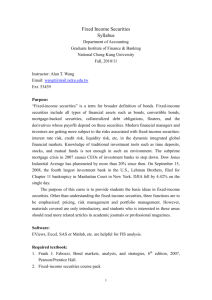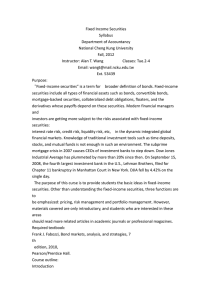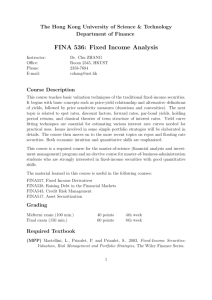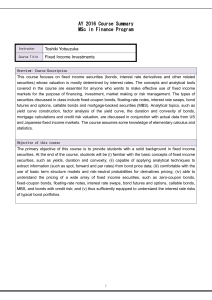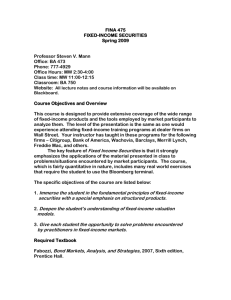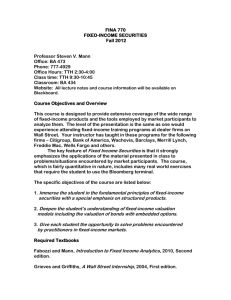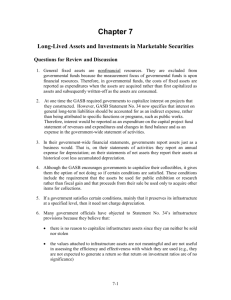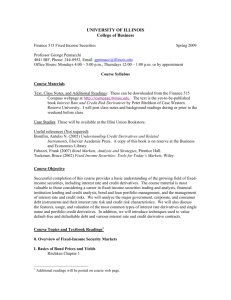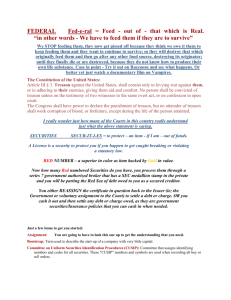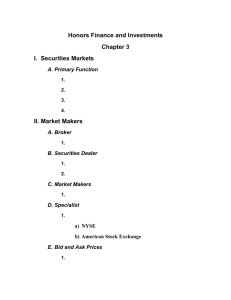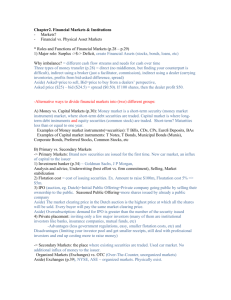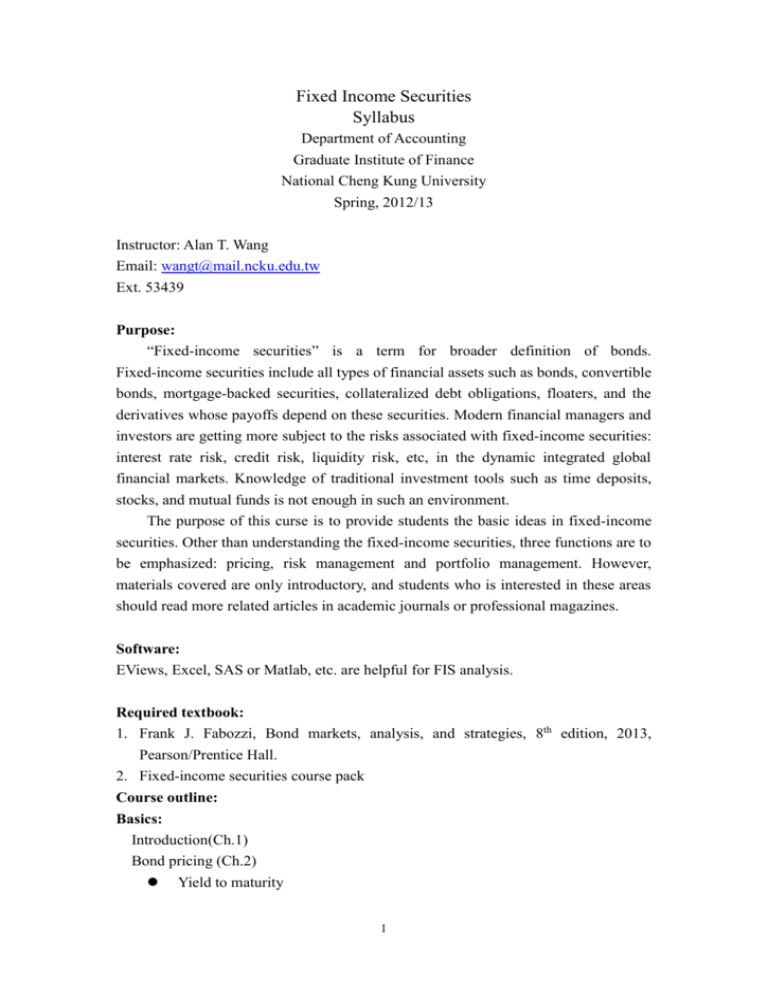
Fixed Income Securities
Syllabus
Department of Accounting
Graduate Institute of Finance
National Cheng Kung University
Spring, 2012/13
Instructor: Alan T. Wang
Email: wangt@mail.ncku.edu.tw
Ext. 53439
Purpose:
“Fixed-income securities” is a term for broader definition of bonds.
Fixed-income securities include all types of financial assets such as bonds, convertible
bonds, mortgage-backed securities, collateralized debt obligations, floaters, and the
derivatives whose payoffs depend on these securities. Modern financial managers and
investors are getting more subject to the risks associated with fixed-income securities:
interest rate risk, credit risk, liquidity risk, etc, in the dynamic integrated global
financial markets. Knowledge of traditional investment tools such as time deposits,
stocks, and mutual funds is not enough in such an environment.
The purpose of this curse is to provide students the basic ideas in fixed-income
securities. Other than understanding the fixed-income securities, three functions are to
be emphasized: pricing, risk management and portfolio management. However,
materials covered are only introductory, and students who is interested in these areas
should read more related articles in academic journals or professional magazines.
Software:
EViews, Excel, SAS or Matlab, etc. are helpful for FIS analysis.
Required textbook:
1. Frank J. Fabozzi, Bond markets, analysis, and strategies, 8th edition, 2013,
Pearson/Prentice Hall.
2. Fixed-income securities course pack
Course outline:
Basics:
Introduction(Ch.1)
Bond pricing (Ch.2)
Yield to maturity
1
Floaters and inverse floaters
Synthetic bonds: arbitrage and pricing (CP. 3)
Replicating bond portfolios using Excel
Using linear programming to search for arbitrage opportunities
Assignment #1: Use Excel to solve the example in page 159 (CP3) (3/20/2013 due)
Assignment #2: Use Excel to solve Example 1 in page 163 and Example 2 in page
166 (CP3) (3/27/2013 due)
Interpreting bond yields (Ch.3)
Bond price volatility: duration (delta), convexity (gamma) and theta (Ch.4, CP. 4)
Bond yields and term structure of interest rates (Ch.5)
Zero coupon bonds and spot rate
Treasury and agency securities markets (Ch.6)
Interest rate quotes in U.S. fixed income markets (CP.6)
Fitting the yield curves (CP.10)
Assignment #3: Fitting the yield curve with Nelson-Siegel scheme (4/10/2013 due)
Corporate debt instruments (Ch.7)
Credit risk modeling: KMV model (Ch. 21, CP.12), (Crouhy, 2000, JBF)
International bonds (Ch.9)
Mid-term Exam (4/17/2013)
Securitization:
Residential mortgage loans (Ch.10)
Agency mortgage pass-through securities and CMO (Ch.11, Ch.12)
Asset-backed securities and CDO (Ch.15)
Derivatives:
Analysis of convertible bonds (Ch.19)
Interest rate futures and options (Ch.26, 27)
Interest rate swaps and agreements (Ch.28)
Credit default swap (Ch.29)
Mathematical modeling:
Introduction to Vasicek and Cox, Ingersoll and Ross term structure models.
Assignment #4: Estimating one-factor CIR model with EViews (CP. 14) (6/12/2013
due)
Final Exam (6/19/2013)
Grade: Mid-term Exam
Assignments
35%
20%
Final Exam
Participation
2
35%
10%

